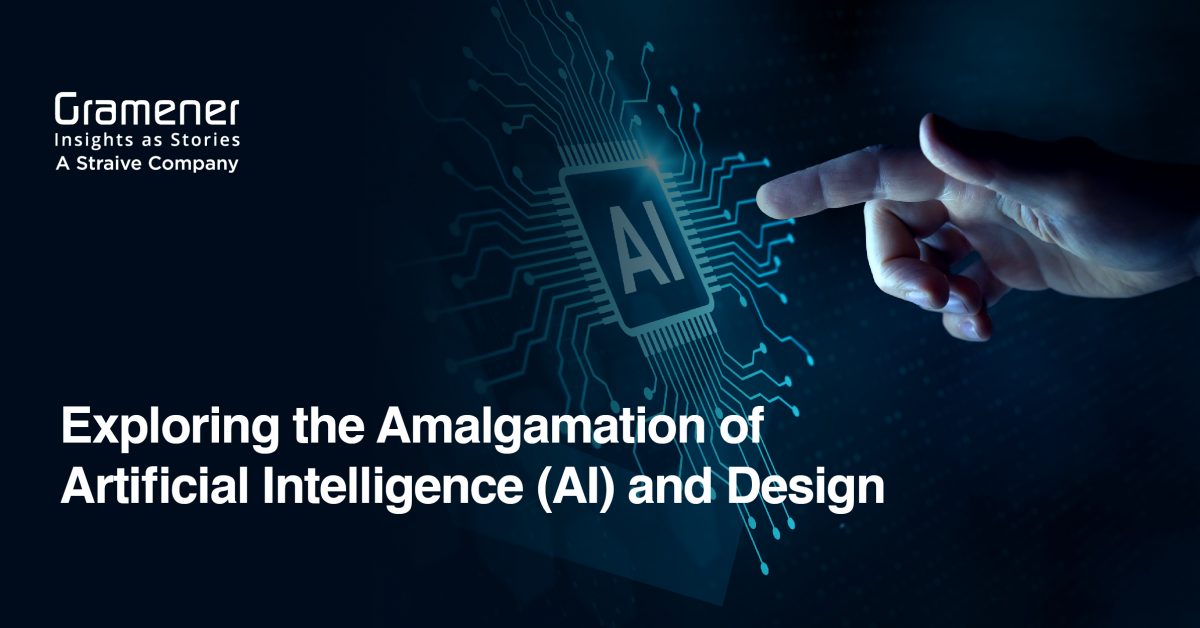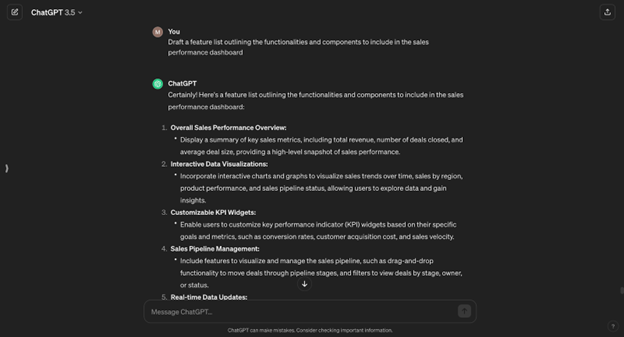AI is everywhere today! It is an ever-evolving field with limitless potential.
And so, we see too many articles on the latest AI tools and exciting AI technological breakthroughs.
First of all, what is AI?
Artificial Intelligence (AI) involves creating smart machines that mimic human intelligence, handling tasks like learning, reasoning, problem-solving, perception, and language understanding.
These machines aim to execute tasks independently, simulating human-like thinking and behavior. They learn by analyzing large datasets, identifying patterns, and applying them to their decision-making processes.
For example, Smartphone virtual assistants like Siri, Google Assistant, or Alexa use AI to understand and respond to voice commands. AI algorithms analyze our voice input to perform tasks like checking the weather or setting a timer. This AI-driven feature streamlines technology interactions, making daily tasks more intuitive and convenient.
AI is advancing rapidly, with innovations leading to more sophisticated applications. Tools like ChatGPT and Google’s Bard are making AI a ubiquitous part of daily life, with companies investing heavily across industries.
Table of Contents
Why use AI?
AI has permeated healthcare, finance, automotive, retail, and more, revolutionizing the design sector as well. The fusion of AI and design presents unprecedented opportunities, streamlining processes, amplifying human creativity, and unlocking new possibilities.
Designers can harness AI to embark on a journey of boundless creativity and innovation, enriching digital and physical experiences. Understanding AI’s significance is crucial for designers to boost creativity and efficiency at work.
There are three main reasons to use AI in UX:
- To help us save time through increased productivity
- To help us improve the quality of our work
- To help us enhance our current skill set
The quality of our ideas and our ability to understand user problems and create solutions that help people are critically important at any age of design, including AI design. Many studies have shown that business professionals produce deliverables faster using AI.
The beauty of AI is its ability to generate endless ideas and variations as we want in no time, and often with the same or better potential as human ideas that require extensive effort to produce.
While this enhances efficiency and productivity, human curation is essential to refine ideas for further exploration and implementation. This symbiosis of humans and AI delivers higher quality than either can achieve alone, thus enhancing our skill set.
How to Get Started with AI?
The below 2 infographics contain some key points that one should keep in mind while getting started with AI for UX and ways to use AI in UX

How to incorporate AI in UX?
AI-driven tools automate routine tasks like resizing images, enhancing photo quality, or even drafting basic layouts. This automation frees up time for designers to engage in more strategic and imaginative endeavors, allowing them to focus on high-level conceptualization and problem-solving.
The below infographics help you with some AI tools that you can use during the design process
For example, John, a data visualization specialist at a sales-driven company, is tasked with creating a comprehensive sales performance dashboard. The company’s leadership seeks a centralized platform to monitor key sales metrics, track performance trends, and identify areas for improvement across sales teams and regions.
To ensure the app meets user needs, John starts by using ChatGPT to draft problem statements. By inputting keywords related to sales team challenges, John receives insights into user frustrations and pain points.
Next, John taps into ChatGPT to brainstorm solutions, inputting prompts like “Provide suggestions for visualizations that effectively represent sales trends and performance?” to gather ideas.
Finally, John uses ChatGPT to draft a preliminary feature list, inputting prompts such as “Draft a feature list outlining the functionalities and components to include in the sales performance dashboard?” to prioritize features based on user needs.
ChatGPT’s insights accelerate the design process, empowering John to explore a wide range of ideas efficiently.
Before moving further on this use case, let us understand….
What is the role of AI in Information Design?
Information design, empowered by Artificial Intelligence (AI), reshapes how we visualize and communicate complex data. Its role spans from simplifying data analysis to personalizing visualizations, ultimately empowering users to derive insights and make informed decisions in a rapidly evolving data-centric world.
In information design, AI aids in extracting insights from intricate datasets, identifying patterns, and recognizing correlations that might not be apparent through manual analysis.
Data Visualization
AI-driven tools can help select appropriate chart types, color schemes, and layouts, streamlining the visualization creation process and ensuring coherence in design, especially when dealing with large and diverse datasets.
Automated Insights Generation
AI-powered dashboards use machine learning algorithms to automatically generate insights and narratives from data, helping users interpret and understand complex datasets more effectively. These insights can be presented alongside visualizations to provide context and actionable intelligence for decision-making.
Natural Language Processing (NLP)
NLP algorithms are crucial in bridging the gap between raw data and storytelling. AI-powered systems can analyze textual data, extract meaningful information, and generate narratives or contextual descriptions that complement visualizations.
Predictive Analytics
AI-powered predictive analytics models analyze historical data to forecast future trends and outcomes. In information design, predictive analytics algorithms generate forecasts, trend analyses, and scenario simulations, which are visualized to aid decision-makers in planning and strategy development.
Image and Video Analysis
AI algorithms for image and video analysis are used in information design to extract insights from visual content. These algorithms can identify objects, scenes, emotions, and text within images and videos, enabling the creation of visualizations and dashboards that incorporate multimedia elements.
Automatic Layout Generation
AI-driven layout generation tools automatically arrange and organize visual elements within a design, optimizing space utilization and visual hierarchy. These tools use machine learning algorithms to learn from design principles and user preferences, producing layouts that are aesthetically pleasing and effective in conveying information.
Use Case Example
In continuation of the above-mentioned example of John creating a sales performance dashboard,
With numerous metrics to track and stakeholders to satisfy, John knew he needed another tool that could streamline the dashboard design process and bring his vision to life seamlessly.
- John opens the Uizard web application or desktop software on his computer and logs into his account.
- Within the project workspace, John navigates to the “Auto Designer” feature, which automatically generates design layouts based on user input and AI algorithms.
- John provides a brief description of the sales performance dashboard he wants to create, specifying key components such as sales metrics, charts, graphs, and data visualization preferences.
- Uizard’s Auto Designer generates a design flow based on John’s input.
- John further customizes the selected layout by editing design elements such as colors, fonts, spacing, and arrangement. He can also add or remove components to tailor the dashboard to his liking.
- Once the design is finalized, John exports the design assets in the desired file format (e.g., PNG, SVG) for further development or sharing with stakeholders.
With the help of an AI tool, John could save the time that he would have spent manually creating designs from scratch. He could quickly iterate on design ideas and explore various layout options. This accelerated the design process, allowing him to experiment with different concepts and make informed decisions more efficiently.
Conclusion
AI is more than just a tool; it’s a partner that enhances our capabilities and simplifies our lives. By utilizing Generative AI tools, UX professionals can accelerate their workflow, strengthen results, and accomplish more without replacing their skills. Designers must equip themselves with the necessary skills to navigate this new terrain and guide Responsible Human-Centered AI development.
The ultimate reason for any individual UX professional to learn AI is Jakob’s Second Law of AI, which says, You won’t lose your job to AI, but to someone who uses AI better than you do.
AI is a mirror looking back at the UX professional: the more skilled we are at UX, the better results we’ll get when using AI for UX.
Although AI is evolving rapidly, starting now is worthwhile. The experience and understanding gained today will facilitate adaptation to future developments, enabling more efficient mastery of new tools or features.
Remember, while AI can enhance our capabilities, it’s the human touch that infuses designs with soul, meaning, and authenticity.
So, let’s embrace AI as a partner in design, unlocking new realms of imagination and crafting a future where creativity knows no bounds.
This blog is written as part of our CoCreate Internal Blog Writing Competition to foster innovation and collaboration. Participants from technical teams share ideas and solutions, showcasing their creativity and expertise. Through this competition, we aim to highlight the power of collective intelligence and the potential of co-creation in solving complex challenges.









